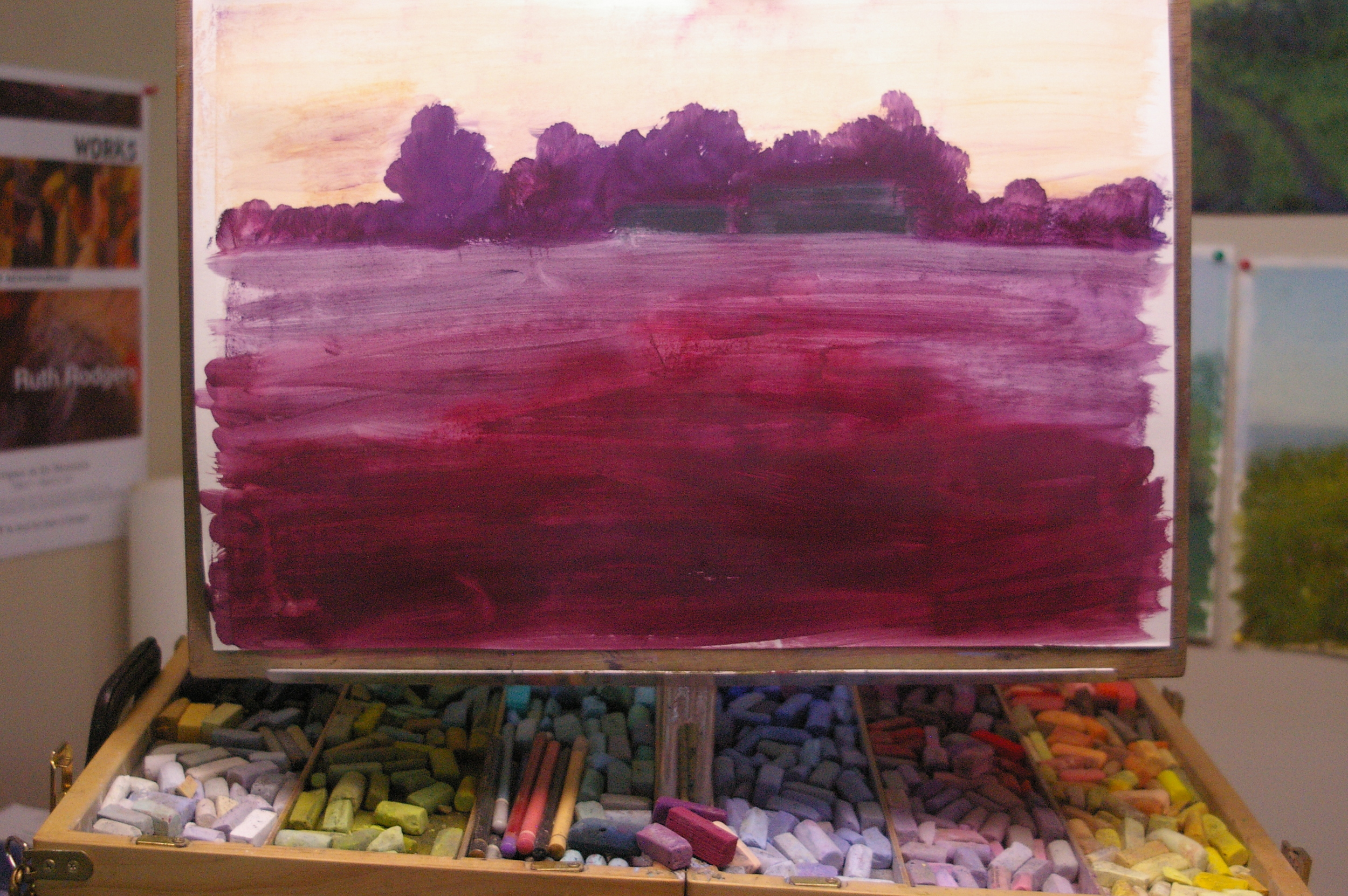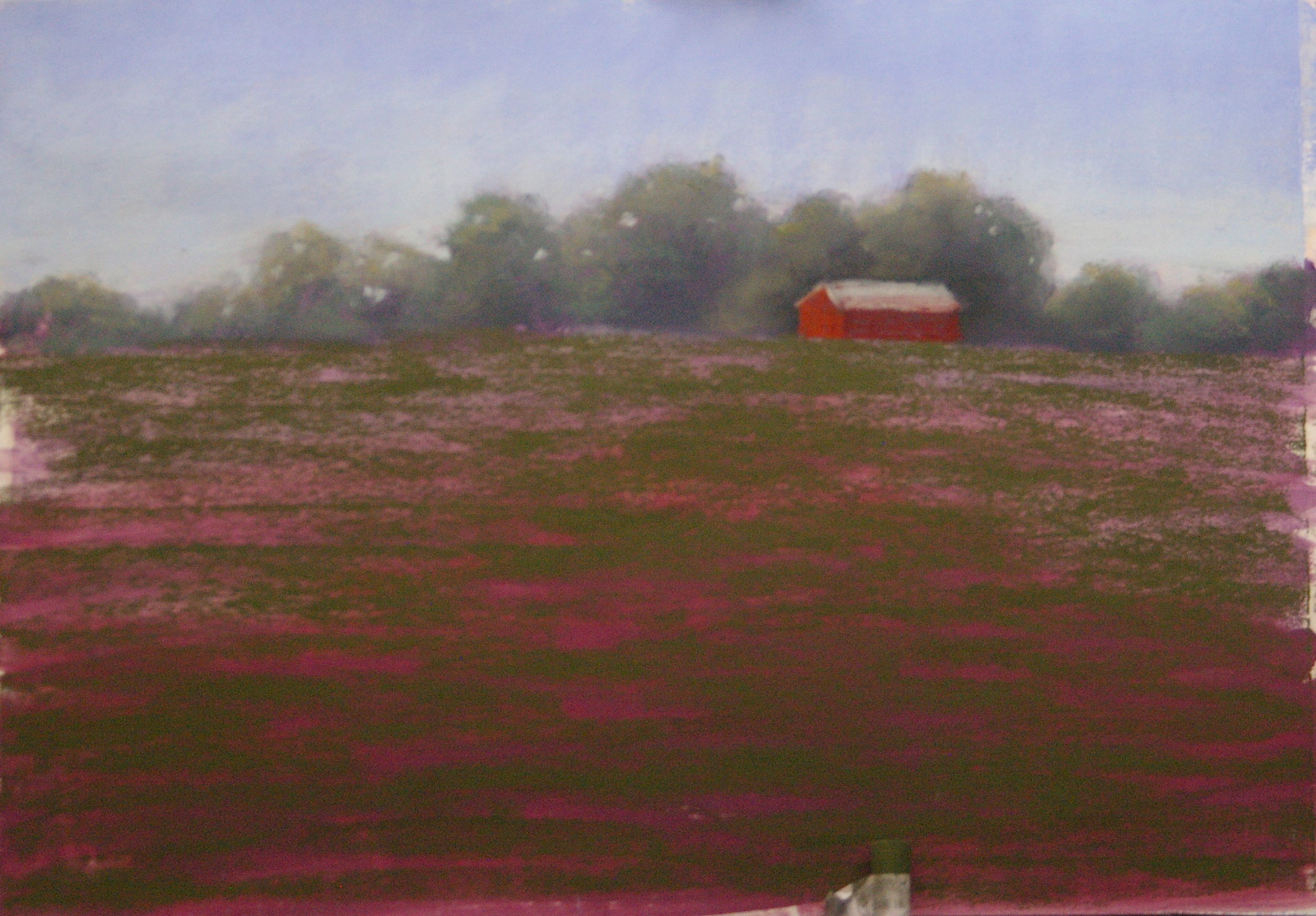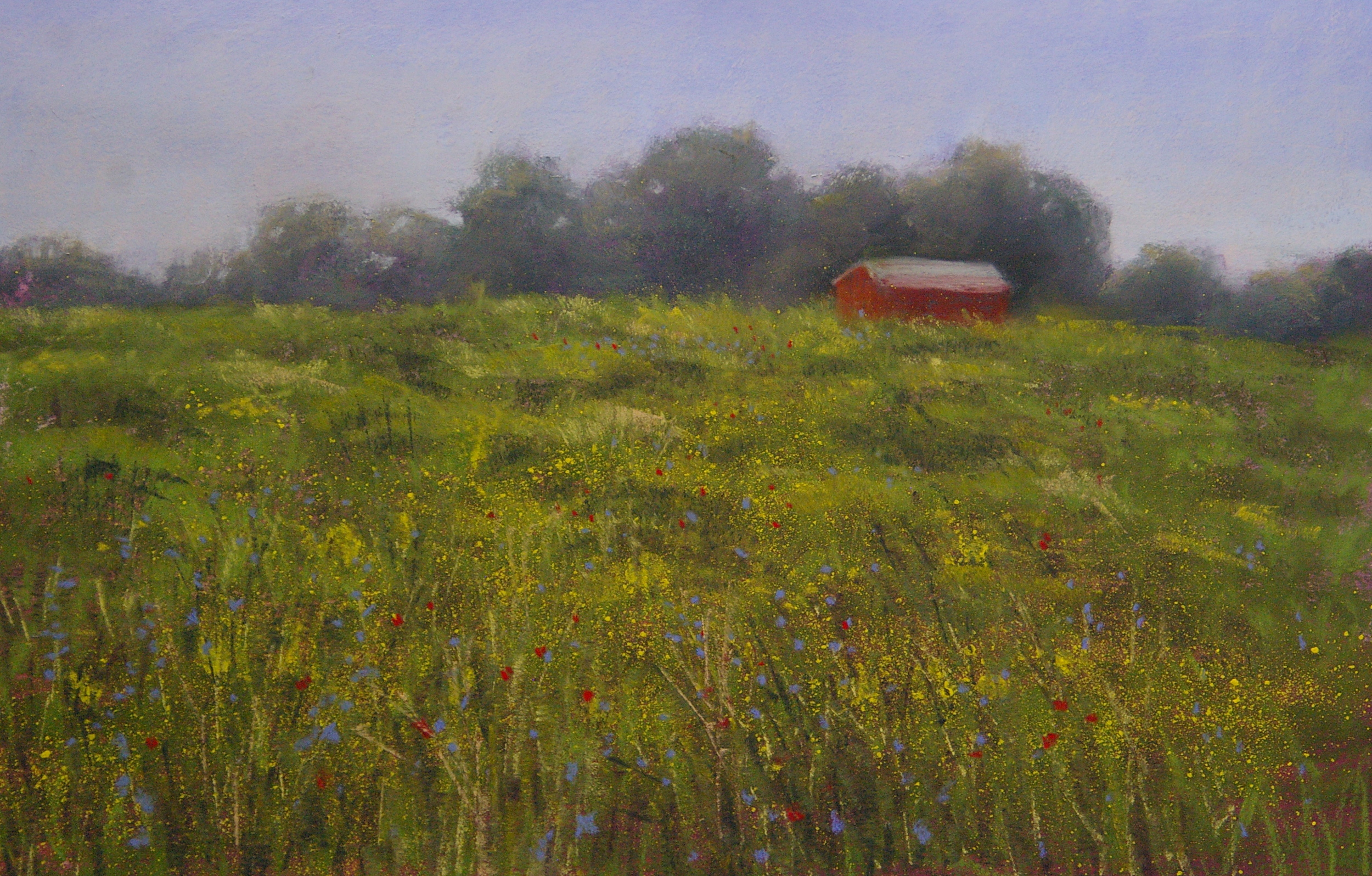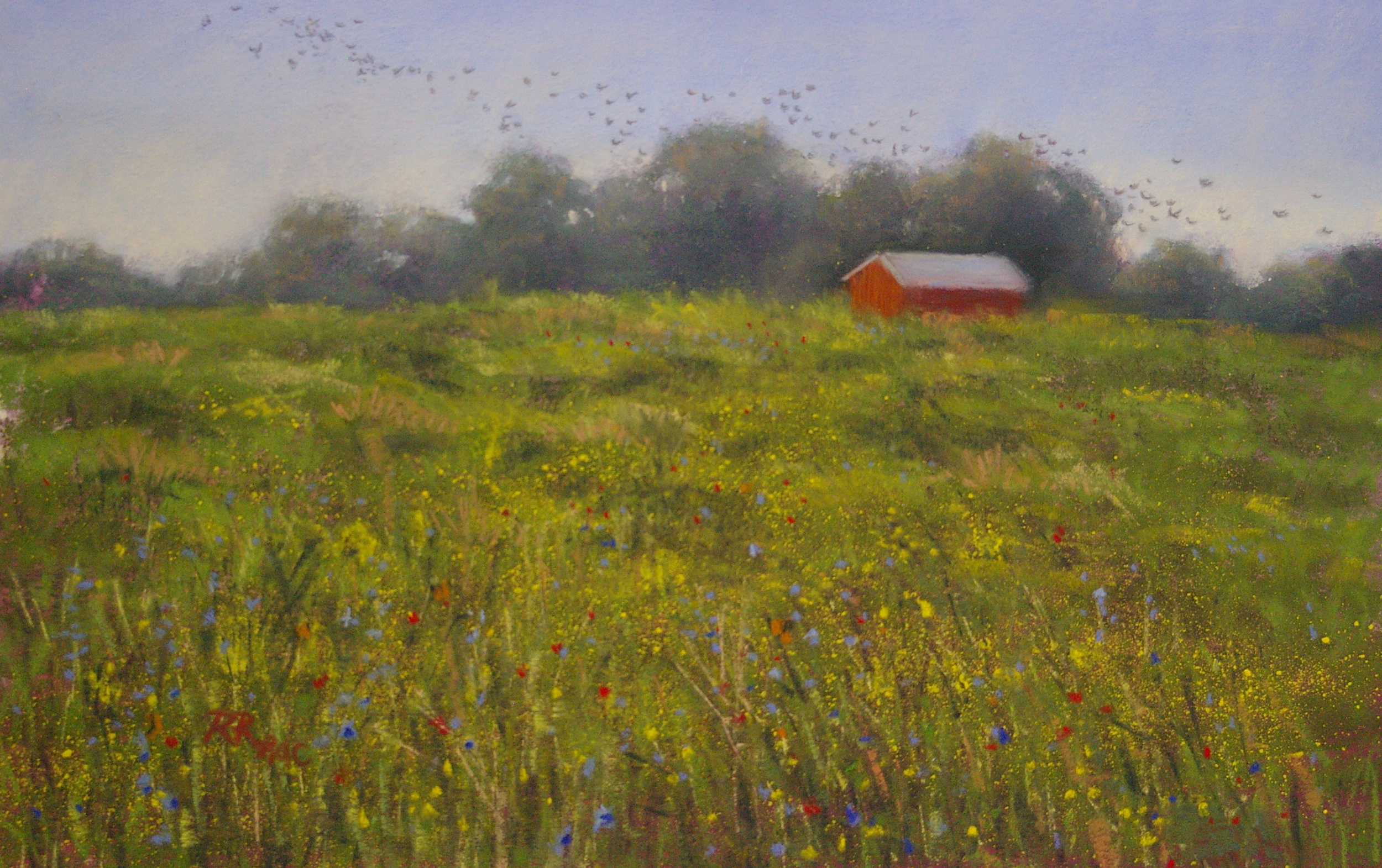Yesterday three students and I enjoyed a session together exploring the power of neutrals. These subtle tones are often neglected by the new pastelist seduced by the jewel-bright intensity of pastels, but they are critical to the success of paintings that aspire to be naturalistic. Nature is sparing with her intense hues, and when we paint with only these, the results can be garish and very unnatural. Neutrals are of great use when utilizing the visual principle of "simultaneous contrast" to direct your viewer's eye through your painting. This principle, at bottom, tells us that things are influenced by their contexts. In other words, our perception of a colour's hue, value, temperature, and intensity are all affected by what surrounds it. There are startling examples in art books where the very same colour looks entirely different because it is surrounded by different colours. For example, a "cool" blue can look warm if surrounded by even cooler greens, or a "warm" scarlet can look cool if surrounded by even hotter oranges. In the same way, a bright colour shouts even louder when surrounded by grayed, subdued tones. You can use these effects to emphasize your focal point and de-emphasize less important areas of your painting. These tones are the quiet cousins of your palette box, and as such are easy to overlook. Richard McKinley suggests organizing them in a separate section of your pastel box, where their subtle beauty and quiet appeal will be more apparent, rather than leaving them to fight it out in the company of the more brilliant hues.
To understand this concept, first we examined photos that revealed the power of neutrals to provide a foil for notes of bold colour. Several photo spreads in the November 2011 issue of National Geographic provided perfect examples: one shows a woman wearing a red headscarf striding through a burnt-out forest in Uganda; the other features a spray of crimson maple leaves on a rock in the midst of a cold scene of a rushing river in late fall. In both cases, the small notes of red leaped off the page and riveted the eye. We also looked at a variety of paintings in art books that illustrated the same idea, even critiquing one in which two notes of red-orange in an otherwise gray-toned painting bounced the viewer's eye between the two extreme edges and destroyed the concept of the work!
We each chose scenes in which we could use the neutrals in the majority of the work, adding a contrastingly intense hue in the area of our focal point. The choices included a snowy field in winter, lit by a splash of warm sunlight on remaining corn stubble in one area only; a shaded green field in midsummer, with a streak of bright green light slipping behind the trees in the foreground and lighting up a slice of the field; a subtle, foggy scene to which the artist added a note of lime green to indicate a momentary ray of light on a distant meadow; and my choice, a photo I had taken just that morning, of the frost on the marsh behind my house, kissed by the first ray of the rising sun. Here's the resulting painting, though it seemed to be impossible to render the correct colours digitally (the actual painting has much less intensity in the orange tress, so the focus is more on the light on the marshes!):

It was a challenging lesson, but all the paintings turned out very well, and it's a concept that is a very useful tool in the painter's toolkit.























